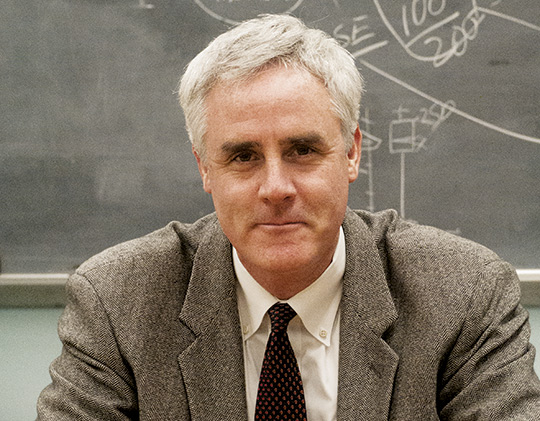Looking for a compromise in today’s world of hyper-polarized journalism and partisan politics, the journalist and author Amanda Ripley visited the Difficult Conversations Lab, where TC’s Peter Coleman – Professor of Psychology and Education, and Director of the Morton Deutsch International Center for Cooperation and Conflict Resolution – researches conflict and solutions to some of society’s intractable problems.
Ripley features Coleman's research here, in The Whole Story, a publication of the Solutions Journalism Network, and summarizes it here, in The Guardian.

Peter Coleman, Professor of Psychology & Education, and Director of TC's Morton Deutsch International Center for Cooperation and Conflict Resolution
In Coleman’s lab, people discuss some of the longest-running, seemingly insoluble conflicts in the world today, what he calls “intractable conflict” in his book, The Five Percent, while he studies their speech and listening patterns for points of agreement. Ripley went to see how journalists might break out of their highly charged silos on the left and right and instead of stirring the pot, foster rapprochement.
Coleman says people on tough sides of a sensitive, high-stakes argument will not be won over to their opponent’s position by receiving more information – however truthful, however persuasive. They are responding emotionally to the news, not intellectually. They will need to be convinced by respectful engagement, not shouting.
“[I]t’s becoming clear that we cannot FOIA [Freedom of Information Act] our way out of this problem," writes Ripley. "If we want to learn the truth, we have to find new ways to listen. If we want our best work to have consequences, we have to be heard.”
Journalists should also try to avoid over-simplification of complex issues, a difficult charge in the modern media landscape of sound bites and tweets. Ripley describes an experiment in which Coleman asked subjects to read one of two different articles on immigration. One laid out two positions, pro and con, but the other gave much more context and complexity to the issue. He then asked both groups to discuss immigration.
“Again and again,” Ripley writes, “people who read the more complicated article went on to have richer conversations. They asked more questions, proposed higher quality ideas and left the lab more satisfied with their conversations.”
Deep-dive, nuanced articles “ ‘don’t solve the debate,’ Coleman says, but they do give readers ‘a more nuanced understanding and more willingness to continue the conversation.’ ”
Coleman, a psychologist, trains people in high conflict to talk to one another. Journalists, Ripley observes, are not trained to do that. “The result is not just boring TV;” she warns, “we are adding to the toxicity when we don’t intend to.”
Coleman and his research hold important lessons for journalism, she writes. “The goal is not to wash away the conflict; it’s to help people wade in and out of the muck (and back in again) with their humanity intact.”
For the Whole Story article, go here. For the Guardian story, go here.